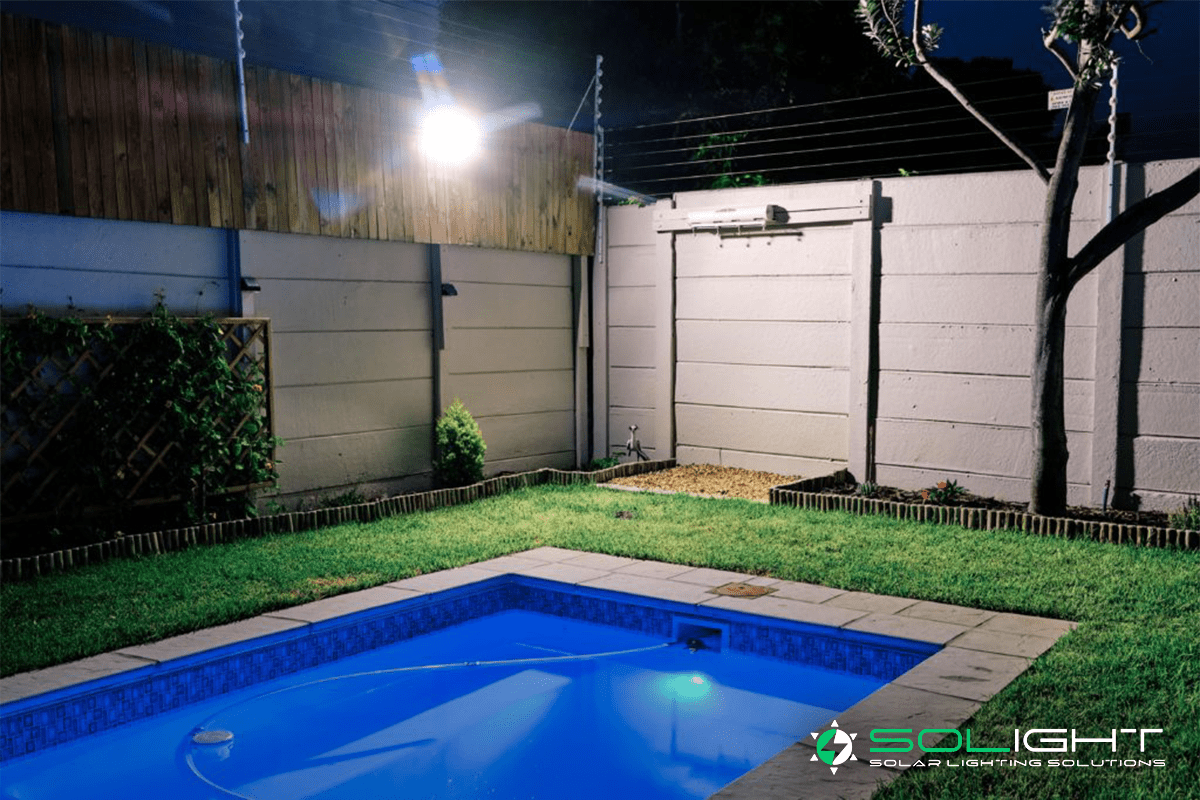PIR motion sensors are one of the many advanced technological developments that make outdoor solar lights responsive, incredibly economical, and with improved durability.
These passive infrared sensors detect heat or movement, which activates solar lighting automatically when required, with the dual benefit of reducing light pollution. A sensor provides augmented security and safety, triggering the lighting whenever a person enters your property boundary.
However, one of the other advantages of picking a SoLight model with PIR sensors is that it ensures your solar lights will last for years.
Let’s explain how PIR sensors work, why they are important, and the implications for your long-term outdoor lighting costs.
PIR Sensors in Outdoor Solar Lights
A sensor is a small but complex component of a professional solar lighting system. Sensors aren’t directly linked to the solar panel, so you can adjust your lights without needing to reposition the sensor.
Sensors work with a network of lenses, which extend coverage and range as far as possible.
PIR motion sensors are used extensively in lighting and security because they recognise any movement, whether you are trying to prevent wildlife from digging in your bins or require security lighting 24/7.
As a summary of their operational functionality:
- The PIR can detect a change in movement, heat or radiation.
- Whenever a change occurs, the motion sensor trips the lighting system.
- Any disturbance within the surveillance zone activates an instant response.
The main limiting factor on the lifespan of any solar light is the longevity of a battery. Therefore, a PIR sensor ensures your lights work whenever you need them but aren’t always on. The outcome is that your battery life is extended countless times over, yet you have a reliable, proactive lighting source when you need it most.
The Benefits of Outdoor Solar Lights Fitted With PIR Sensors
We often talk about the ‘bigger picture’ reasons solar lights are replacing so many hard-wired installations, and that solar lighting is cost-free to run and supports the environment.
A PIR sensor also creates zero strain on the battery when the lighting isn’t required, while your security lights work flawlessly regardless of whether you are at home. This durability is key to making solar lights more than a more affordable solution – it assures that high-performance solar lighting installations will outlast their conventional counterparts multiple times over.
To explain this better, let’s analyse one of SoLight’s leading outdoor lighting models!
The Mars 2 Solar Wall Light comes equipped with a lithium-ion battery with a lifespan of over 1,500 cycles. One cycle lasts around three days, meaning this high-performance battery is designed to last for approximately 4,500 days – or over 12 years.
However, the features engineered into each lighting unit support even greater durability:
- The alloy casing has an on/off switch, so you can disarm your lights when not required.
- TCS (battery temperature and control) protects the battery in hot weather to prolong performance.
- A PIR sensor allows you to automate your light functions, so it only activates when there is a movement within a five to ten-metre distance.
Maximising the efficiency of every component within a solar light helps to preserve battery life and keep your solar lights working perfectly.
Installing Outdoor Solar Lights With a PIR Sensors
The guidelines indicate that a PIR sensor shouldn’t be fitted within ten feet of a heating vent because excessive exposure to prolonged heat can slowly degrade the unit – although picking a lighting system with TCS technology can guard against this.
Sensors have varying detection capacities, so if you require an outdoor solar light for security purposes, it is wise to measure the area first to ensure you choose a suitable product. All SoLight Security Lights have an extended range of up to ten metres, so they will comfortably cover broad spaces, such as driveways, gardens, courtyards and porches.
Ideally, your solar lights should be mounted somewhere that benefits from at least four to six hours of sunlight per day to allow the battery to fully recharge and avoid becoming too depleted.
Cleaning your PIR sensor every few weeks is also a good way to ensure it works correctly. It removes dust settled on the surface that could potentially interfere with the infrared technology.
Extending the Lifespan of Your Solar Lights
Lighting longevity demonstrates excellent value for money since a solar light requires no wiring, electrical supply or ongoing running costs – the longer the light remains in good condition, the more economical it is!
A solar light, in perfect conditions, can work for as long as 25 years, although solar batteries may require replacing sooner.
Here are some tips to help your solar lights operate for longer:
- Consider the placement carefully. If the solar panels have a good amount of regular, direct sunlight, they won’t run entirely flat – this will not necessarily impact the solar light itself but may mean the battery needs replacing sooner.
- Avoid fitting solar lights under trees or walls and rooftops with an overhang that will create shade.
- Artificial light sources (such as street lights) can hamper the sensor, so it’s best to fit your solar lights a little further away to get the best lighting effect and responsiveness from the PIR sensor.
- If you live in a region of South Africa with seasonal weather changes, you may wish to adjust the tilt or angle of your light, setting the angle higher in the winter to receive more sunlight.
- Charging the batteries before your first use will mean they are fully charged before installation and can help optimise battery performance.
Following these suggestions will help ensure your solar lights have an extended lifespan and continue to illuminate automatically with the aid of the in-built PIR sensor.
Please contact SoLight if you would like any assistance choosing the best solar lighting solution for your property – or browse our online catalogue for full specifications for each lighting option within our extensive range.





